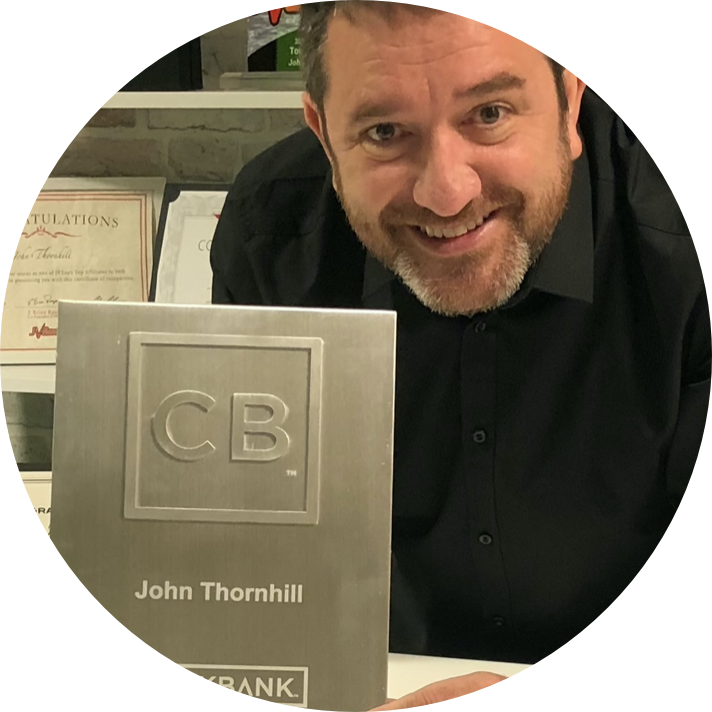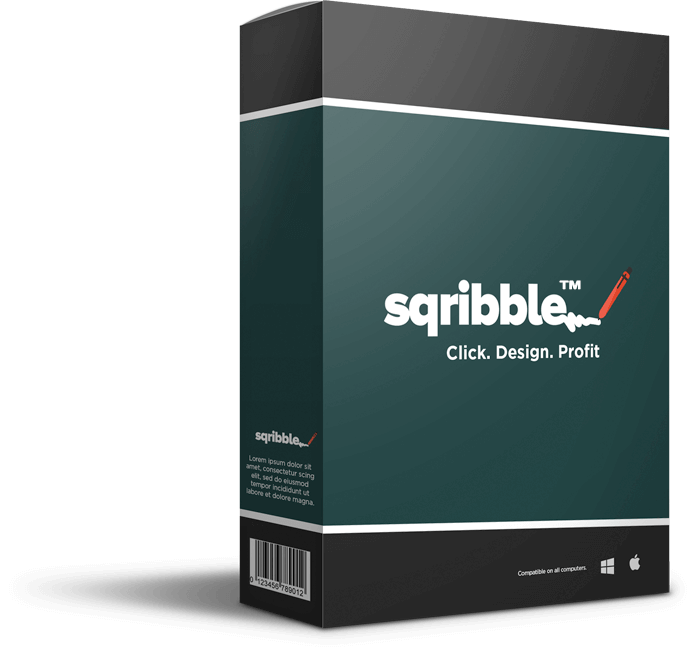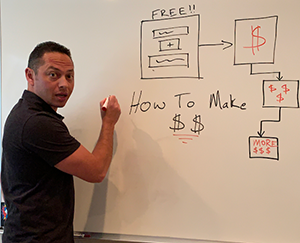Unlocking Your Life’s Creative Brief: A Powerful Practice for Personal Transformation written by Tosin Jerugba read more at Duct Tape Marketing
The Duct Tape Marketing Podcast with Bonnie Wan In this episode of the Duct Tape Marketing Podcast, I interviewed Bonnie Wan, the Head of Brand Strategy at the renowned ad agency Goodby and Silverstein. With decades of experience in brand strategy, Bonnie introduces us to her transformative practice discussed in her latest book, Life Brief […]
Unlocking Your Life’s Creative Brief: A Powerful Practice for Personal Transformation written by Tosin Jerugba read more at Duct Tape Marketing
The Duct Tape Marketing Podcast with Bonnie Wan
In this episode of the Duct Tape Marketing Podcast, I interviewed Bonnie Wan, the Head of Brand Strategy at the renowned ad agency Goodby and Silverstein. With decades of experience in brand strategy, Bonnie introduces us to her transformative practice discussed in her latest book, Life Brief Method: How to Recenter Goals and Values in Your Life for Bettering Your Workplace. Dive into the conversation as we explore the essence of creative briefs and how they can be applied not only to businesses but to our personal lives for profound transformations.
Key Takeaways
A practice born from personal crisis, The Life Brief Method guides individuals through life’s crossroads with clarity and intention. In this episode Bonnie emphasizes the importance of embracing the “get messy, get clear, get active” approach, advocating for small, intentional shifts over grand gestures for lasting change. Uncover the power of daily micro movements in challenging limiting beliefs that lead to meaningful transformations. Whether it’s understanding the art of small shifts or recognizing that the key to transformation lies in openness to self-discovery, Bonnie Wan provides actionable insights to unlock your life’s creative brief and embark on a journey towards intentional living.
Questions I ask Bonnie Wan:
[00:58] Would you say the book is written for someone in transition or perhaps stuck?
[01:50] How has this practice transformed your life or your decision making?
[05:00] What is a creative brief?
[08:24] How has writing this book on creative briefs helped you become a better strategist?
[07:56] Would you say that in some ways the first step in getting unstuck in business is understanding what limiting beliefs are?
[13:11] Explain what the three stages of creating a life brief?
[15:43] As a practice is do you create a life brief solo or would need some help?
[16:50] Is there a tendency for people to make big decisions in order to make change in their lives as opposed to micro-movements?
[19:13] Is there a particular time in life to begin this practice?
[20:30] Where can people connect with you and pick up a copy of The Life Brief?
More About Bonnie Wan:
- Connect with Bonnie on LinkedIn
- Connect with Bonnie on Instagram
- Visit her Website
- Get a copy of The Life Brief
Like this show? Click on over and give us a review on iTunes, please!
Connect with John Jantsch on LinkedIn
John (00:08): Hello, and welcome to another episode of the Duct Tape Marketing Podcast. This is John Jantsch. My guest today is Bonnie Wan. As the head of brand strategy for the storied ad agency, Goodby and Silverstein, Bonnie Wan has helped the world’s most iconic brands align with their essential virtues using a tool called a creative brief. So when she found herself on the precipice of her own deep dissatisfaction and doubt, she turned the same tool inward. And we’re going to talk about that because she talks about it in her book Life Brief Method, how to Recenter goals and values in your life for bettering Your Workplace. So Bonnie, welcome to the show.
Bonnie (00:48): Thank you for having me, John. It’s an honor to be here.
John (00:52): Well, so let’s start with you talk about the book being kind of a tool for people navigating life’s crossroads. So would you say that’s who this book is really written for? Somebody who feels in transition or maybe stuck?
Bonnie (01:05): I think that’s the reason some people will want to come into it because when we feel stuck, we suddenly are grasping and opening our minds and hearts to new approaches. But at the end of the day, I think the book can be useful for anyone across all the various parts of their lives. And in the 14 years I’ve been doing this, I’ve met people using this practice across everything they’ve written briefs for everything from parenting to relationships to their careers and their side hustles.
John (01:40): Awesome. Well, we’ll talk about some of those examples, but first I guess I want to hear a little bit of your story. I mean, I said in the bio in your intro that some of this came out of your own searching. So I’d love to hear a little bit about how this practice has maybe transformed your life or at least your process of decision-making.
Bonnie (01:59): Yeah, so it originated in a moment of personal crisis for me, a crisis of meaning in my marriage. Back in 2010, I’d already been doing brand strategy for decades, so I was very practiced in it for business, helping companies get really clear about the essence, who they are, what they believe, and what they want so that they could be as innovative and creative as. So when I found myself at the crossroads myself, I thought my husband was the problem. I thought my marriage was broken, and the same stories were swirling in my head. And again, at the lowest darkest point it was either I was going to move ahead and fracture this thing we had created or I was going to try something new. And in that moment, a reflex popped up, which was my strategy reflex. I recognized the confusion I was facing and the urgency and need for change.
(03:06): So instead of operating as someone who was troubled in their marriage, I put on my strategist hat and I dropped into what is at the essence of what’s going on here. And I started writing because as a strategist, I like to say my job is to find meaning in messiness. I look at a company, the problems are in how their category is changing. I help them find the way through by dropping into what’s essential, not all the noise. So that’s what I did right there in my childhood bedroom, I dropped in through writing to, the essential question for me is, what do I want? Not what does my marriage need? What do my children expect? Not what my parents want for me, but what do I want? At the end of the day, and after a couple of hours of writing, I stepped back and I looked at what had come out onto the page, and what I realized was my first big aha, which is, oh, my problem isn’t my husband, my problem is my relationship with time.
(04:17): Because everything I had written about was wanting more time to be with him, not fighting, negotiating, debating more time with my children, more presence and facelessness for myself. And once I was able to see that, and I could only see that because I had the distance of writing it was on a page and I could be in relationship with it, only then did I get that aha that took me into a different direction in terms of calling forth what my solutions could be for the real problem at hand, which is where I was aiming my attention, how I was prioritizing my time.
John (05:00): I want to dive more into that, but I feel like I’ve gotten a little ahead of myself. I know what a creative brief is, but maybe listeners, that analogy that really underpins the entire book, maybe we ought to back up a little bit and explain what that is and how you use that as an analogy from your professional work.
Bonnie (05:18): So the name kind of says it all right. It’s a brief meaning a distillation of creativity. So it’s a creative briefs are a sharp and sticky distillation of what a brand stands for, what a company stands for, and where their ambition is. And that brief is a single-minded single page document that culminates in a single idea about where we’re going and aligns everybody on a team to get onto that singular strategy. And that is usually expressed in a way that is explosive creatively, meaning once you read it, boom, you have so many ideas. And that’s what creative briefs do. Not only do they distill to the essence, but they expand your sense of possibility. A life brief does the same for people. It’s a clear and concise declaration of what you want expressed in a way that just tattoos onto your mind and into your heart so that every decision, choice, action you take starts and emanates from that place.
(06:37): So for instance, my marriage brief actually was handed to me from my husband. It was the second time that life briefing saved our marriage. It’s called Mad Love. And now the brief itself has five sharp declarative statements about what our partnership means to us. But it’s summarized in that phrase mad love because he asked me the question in the middle of a really everyday fight, are you still madly in love with me? And I was completely taken aback that was not what I was expecting to come out of his mouth, but once it came out of his mouth, an answer came up in my throat. And luckily I didn’t let it out in that moment because it was no, I am not madly in love with you. But it did stir stirred with me for weeks when I then had to unpack for myself first and foremost, because the life brief is a private practice of permission.
(07:38): I had to sit nakedly honest and think about do I want mad love? And that was hell, yes, I’m too young to not experience mad love ever again in my life. And then the harder question, do I want mad love with my husband? After 17 years of marriage, four kids, three moves, four moves maybe at that time. And eventually it got to the answer, yes, I do want mad love. And from there, once I declared it for myself, this is the private practice, it’s not for anybody else, but once I got to the exclamation point declaration of Yes, I am ready to be madly in love with my husband again, my action showed up automatically differently the next day.
John (08:24): This is probably not, well, maybe you’ve had this question, but as I go through the parts of this, I feel like this book is actually a really great primer on how to create a creative brief as well. Have you ever gone backwards instead of just you, your experience created the analogy, but now it’s like this is maybe the best book on a creative brief I’ve ever seen.
Bonnie (08:48): Thank you for saying that. It’s funny, writing the book made me a better strategy for sure, because my editor’s mantra to me was, so much of this is intuitive. Your job is to walk the blind horse down the mountain to water through your words. So I had to really translate everything that was so intuitive to three decades of doing this work and spell it out for somebody in some state in some suburb or rural farm who had never even heard about creativity, creative briefs, advertising, et cetera. So I really had to explain to a listen. And so it made me a better strategist. And then I just had one of my industry heroes read it and he said, what’s in here is a really great strategy book. So I honored, I felt honored that it has dual purposes.
John (09:48): Alright, so staying on that track a little bit, but I’ve done for 30 years myself, marketing strategy for small mid-size businesses. And one of the things that I struggle with the most, or I have to get people over is that in business in life, we are hobbled by a lot of limiting beliefs. And a lot of times people won’t do the bold thing in their business that the creative brief obviously screams to because they believe something that’s true or not true. So in life, that’s really the first step, isn’t it? I mean, what are some ways that a lot of times these limiting beliefs are very powerful or have a very powerful hold on people? So would you say that in some ways is the first step is understanding what these limiting beliefs are and the hold that they have?
Bonnie (10:32): Yes. The writing practice that this invites helps call forward those limiting stories or beliefs, and I hear them all the time in my workshops applied to personal lives and often they’re adopted or inherited from as young as childhood. I had a woman at a retreat say to me the first day of the retreat, my parents told me never to ask for what I want. It will always lead to disappointment, but it’s so great as you said, to be aware, oh wait, that’s not my story. At least it’s not built from my own experience of life. But that was something I was told and well-intentioned by people who love me and want to keep me safe, but now that I’ve created awareness around it and I can see it in writing now, let’s play with it like clay. What if it wasn’t true? What would I replace that story with?
(11:33): What evidence do I have that belief is true? What evidence do I have in my own experience of life or business that demonstrate the opposite of this belief is true. The other limiting belief that I think we all share culturally is that there are only ever two choices in life or business, yes or no stay or go this or that. Whereas growing up you and I in creative industries, marketing is a creative space in the world of business because you have to look beyond what is today and imagine what could be. And being in that creative space, having spent so many years in it, I see such a range of possibility beyond yes or no, stay or go, but we have to train ourselves. And that’s why I call it a practice. We have to practice imagining some really bold and brave what ifs. And only when we expand our minds that way can we start to pursue new sets of realities for our businesses and our lives.
John (12:48): I’m glad you mentioned the word practice because that’s where I think you diverge from. The idea of a creative brief is a lot of times for a creative brief, it’s more of a plan that we’re going to act on or we’re going to create goals around, whereas you call this a practice, and I think that’s where it really, I think it really diverges from the analogy a bit. What we probably ought to do is dive into what the practice or the approach looks like. You talk, there’s the three stages that you go through. So maybe start unpacking that a little bit.
Bonnie (13:19): Yeah, I’ll step back for a minute and just say, creative briefs are not quite plans, but they help us get to plans and actions. I see creative briefs as springboards because they don’t tell you the ideas nor how to execute on those ideas, but they do tell you a very sharp and potent starting place to think about how to solve business problem or a brand problem. And it is the starting point from which everyone, creatives, then producers, then makers, they all leap from that place. So it’s not exactly a plan, but it is the spark and catalyst for us to get to great ideas. And then the plans for those ideas. When I talk about practice, it is the practice of getting messy, then getting clear, then getting active, which are the three parts of the life brief and the book and getting messy is the part that we like to skip in this really fast-paced business culture we all work in, right?
(14:28): Everything’s urgent, everything’s a fire. But the important step is to step back and reflect and get clarity on your strategy before you invest a lot of time, energy, and money in the actions. If you don’t have the clarity of where you’re going to go, then you’re going to have a lot of U-turns. You’re going to have a lot of waste of expenditure. If you’re talking about a business, right? You’re going to be throwing spaghetti at the wall. So if you take a moment, it’s not a long time, but just to get messy, meaning getting all the ingredients out on the table so that you can make meaning of it. So you can sort it and separate it and then get really clear on what matters and then express it in a powerful, inspiring way. Now all your actions are going to sing, they’re going to be smart investments because you started from that place of clarity, and that takes practice. We still have to unwind all those years of behaviors that we have in terms of acting first and then apologizing later.
John (15:34): A lot of times when we work with brands, they bring us in as a third party outside, we can see things they can’t see or things that they just take for granted anymore. Right. So does this as a practice, is it hard to do yourself? I mean, do you need a coach to do this? Do you need a team of people that know you well to help get some of this out?
Bonnie (15:53): Great question. Well, if you’re going to do it solo, it does work solo. That’s why the writing is important, because when you write things down, you create distance between you and your feelings, you and your anxiety, you and your fears. And once captured and parked in writing, you can now look at it from a lens of curiosity and distance that is less fraught. But people do love life briefing together. And so in the earliest days of this practice, people loved attending the workshops. People loved buying my first thought starter. Workbooks that the agency printed could be silver senior partners, they’re so wonderful partners on this practice, but people would buy them in bundles of three or multiple bundles of three for their work team, for their girlfriend weekend as couples, as families. So I think there’s some elevated sense of permission and inspiration when people life brief together.
John (16:55): So particularly when we’re talking about somebody in transition or stuck and they go through this, is there sometimes a tendency to want to say, I’ve got to do something really big. I’ve got to quit my job, I’ve got to move across the country. That’s the only way to change it. When you actually talk about lasting and meaningful change comes more often from a daily flow of micro movements. And do you sometimes have to help people resist that? It might just be a slight change or a slight different way to think about, or even like we’ve had brands we worked with where we just changed the wording in their promise and it made all the difference.
Bonnie (17:30): That’s right. We often think because of the urgency of the fear or the feelings or the high stakes world of competition, right? There’s no time we have to go big or go home. I found the most dramatic changes happened in a series of tiny steps, just like you said, tiny inflections and shifts that made all the difference, that created ripple effects that led you to big change. So you yourself, don’t have to leap, burn the house down, quit your job, get a divorce, quit your children up for adoption, make your pet. It might feel that way. But if you have the clarity, again, you can start by the smallest singular step that is irresistible and inexcusable, and then see what unfolds from that small shift. And often no one else in your life notices that shift, but you and the internal shifts are actually the ones that are most powerful. And as soon as you shift how you show up in a meeting, how you show up with your spouse, how you show up with your kid, suddenly they might not even notice it, but they start to shift because it’s this interrelational dance that happens between how we show up and the world we’re in.
John (18:59): So you’ve, over the years of doing this, you’ve probably worked with people in different ages, different places in their life. Do you find that people approach it differently? Do you find that it applies almost the same way regardless of where people are? Or is there a perfect time in your life to do this?
Bonnie (19:18): There’s no perfect age, time or way, but I find the thing that is shared for people who really get into the process are unlocked by the practice, is that they are open. They come into it and open-hearted. If you’re resistant, this isn’t going to work because this is a self unlocking book and practice. You have to be open. And so seekers, people who really want to be bettering themselves in their business, in their work, in their relationships, it’s that openness that is shared across the demographics. So like we say in marketing, it’s more important to understand the mindset and what unites your audience than what makes them different. And this is a practice that cuts across all ages, stages, and types of moments and types of people. What makes it potent is if you come in open to trying something new.
John (20:26): Absolutely. Well, Bonnie, I appreciate you taking a moment to stop by the Duct Tape Marketing Podcast. You want to invite people where they might connect with you, learn more about your work, and obviously pick up a copy of the life brief.
Bonnie (20:35): Yes, the life brief.com is where you can find everything. The Life Brief book launches on January 16th, and it can be anywhere. You can buy a book, Amazon, bards and noble bookshop.org. Thank you John for having me.
John (20:52): Awesome. Well, again, I appreciate you stopping by and hopefully we’ll run into you one of these days out there on the road.
Sign up to receive email updates
Enter your name and email address below and I’ll send you periodic updates about the podcast.
Recommended Story For You :

How To Make $3493 Commissions Without Doing Any Selling

Successful dropshippers have reliable suppliers.

People Think I Use A Professional Voiceover Artist. NO! I Just Use Speechelo!

Make Money Testing Apps On Your Phone Or Tablet

Make More Money or Lose Everything

Sqribble Is The ONLY eBook Creator You’ll Ever Need.

Work & Earn as an Online Assistant

Create Ongoing Income Streams Of $500 To $1000 Or More Per Day

It's The Internet's Easiest Side Business.






